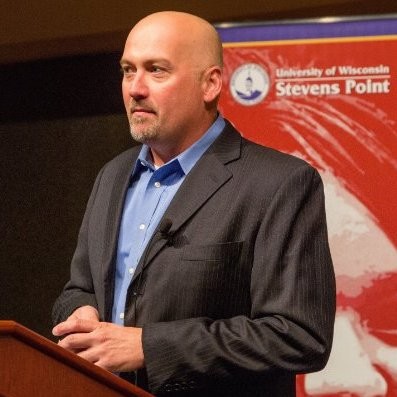Indoor environments can contain unknown pollutants such as dust, heavy metals, mold, bacteria, endotoxins, viruses, and allergens. Allergies affect between 10 and 30% of the population[1] so eliminating allergens, pathogens and soils is critical for good hygiene and facility health. To maintain good indoor air quality (IAQ) and safety for cleaners and building occupants, cleaning is an important part of the process.
The prevalence of asthma, allergies, respiratory disease, and other illnesses that could be exacerbated by poor IAQ require best cleaning practices. Historically, the solution has been to use the most aggressive chemistry and cleaning methods to ensure the highest level of hygiene and cleanliness. Although routine cleaning can help reduce pollutants and pathogens, aggressive cleaning chemicals such as bleach and ammonia have also been shown to contribute to indoor air pollution in some situations. Avoiding indoor air pollution requires a holistic cleaning approach that considers products, methods, tools, and training.
Product Selection
The cleaning products industry continues to evolve and improve by eliminating many chemicals with unfavorable health and safety profiles. Products with high levels of volatile organic chemicals (VOCs), extreme pH, or chlorinated solvents are being replaced with neutral cleaners that are often certified ‘Green’. Almost all manufacturers and distributors offer a ‘Green’ range of products that feature a basic level of health and safety performance.
Those products are often certified by 3rd parties such as EU Ecolabel, Nordic Swan, Green Seal, or EcoLogo. Certification means the products have passed health and safety criteria, including benchmarks for VOCs and respiratory toxicity. If used correctly, those products shouldn’t negatively affect air quality.
There are also certifications that are specific to IAQ. The most popular is GREENGUARD, administered by Underwriters Laboratories (UL). Materials certified by GREENGUARD have undergone rigorous air testing to measure the airborne chemicals that result after products are applied in a controlled atmospheric chamber.
Best practices for product selection utilize the fewest number of products, rely on ‘Green’ certifications where possible, adopt dilution control systems such as RTD® or J-Fill® to increase packaging efficiency, prevent over-dilution of chemicals, and assist with training.
Cleaning Methods
Even the best products, when used improperly, can result in poor IAQ. Using too much, cross-mixing chemicals, unnecessary spraying, or failing to rinse chemicals can all lead to worsening air quality. Cleaning protocols should specify the right product for the application and how it should be diluted, applied, and rinsed. All applications should be considered individually. For example, carpet extraction performed with hot water can reduce allergens and for spray-and-wipe applications, it’s often better to spray a microfiber cloth instead of the surface being cleaned to reduce the amount of aerosol in the air and the amount of chemical needed.
Cleaning methods should cover the whole scope of the cleaning process from storage to disposal. Keeping chemicals stored properly and equipment maintained will help prevent spills, avoid leaks, and stop inadvertent mixing. Cleaning and training methods should also stress appropriate personal protective equipment (PPE) and a greater awareness of chemical hazards. Effective cleaning removes pollutants and improves hygiene, while ensuring that the methods don’t cause additional IAQ problems. Follow a recognized green cleaning protocol, such as Diversey’s Healthy High Performance Cleaning to ensure the best IAQ.
Cleaning Tools
Finally, cleaning methods go beyond chemicals to include the tools and equipment needed for optimum results. The tools and equipment used to clean a facility have a big impact on IAQ. Effectively removing pollutants and preventing them from becoming airborne relies on the rags, wipes, vacuums, mops, and autoscrubbers employed.
Indoor pollutants, such as dust mite allergens, are so small they can pass through traditional vacuum bags. Therefore, the act of vacuuming can disperse pollutants in the air and create a more severe problem for allergen sufferers. A 3-stage or HEPA (high efficiency particulate air) filter can significantly reduce chance the allergens dispersed into the air.
Other cleaning tools to consider are the wipes being used, the presence of walk-off mats, autoscrubbers, mops, and burnishers. Walk-off mats, HEPA vacuum bags, and microfibers have all been found to reduce the amount of airborne dust up to 52% when used with good cleaning methods[2].
Training
Training is essential to address some of the most common mistakes made during cleaning. Using the wrong product, mixing products, over-use of cleaners, and mis-dilution of concentrated cleaners are all causes of indoor air quality problems. All good green cleaning programs have a strong focus on process and training to ensure the right products are used correctly.
New Trends
A few new trends in the cleaning industry have the potential to improve IAQ. Chemically, products are increasingly using bio-based materials, enzymes, organic acids and hydrogen peroxide, which are non-volatile and tend to have good health, safety, and environmental profiles. Accelerated Hydrogen Peroxide® (AHP) is proving to be a better alternative to standard bleach solutions due to safety and environmental concerns.
Conclusion
To protect workers, building occupants, and the public, IAQ is a critical issue for the cleaning industry. Cleaning products can be both a problem and solution when it comes to IAQ.
The purpose of this article is to explore best practices and examine the role of ‘green cleaning’ to improve IAQ in healthcare. Diversey’s Healthy High Performance Cleaning (HHPC) system includes the green cleaning process, tools, and commonly used cleaning products. GREENGUARD certification of HHPC addresses any chemical interactions, product mixing, and the application process ensuring the cleaning system won’t negatively impact IAQ.
To download our sustainability report and learn more about Diversey’s commitments to social and environmental stewardship go to https://www.diversey.com/sustainability.
[1] World Health Organization. White Book on Allergy 2011-2012 Executive Summary. By Prof. Ruby Pawankar, MD, PhD, Prof. Giorgio Walkter Canonica, MD, Prof. Stephen T. Holgate, BSc, MD, DSc, FMed Sci and Prof. Richard F. Lockey, MD.
[2] (Indoor Environment Characterisation of a Non-Problem Building: Assessment of Cleaning Effectiveness, US Environmental Protection Agency, EPA Cooperative Agreement CR-815509-02-01, March 1994




